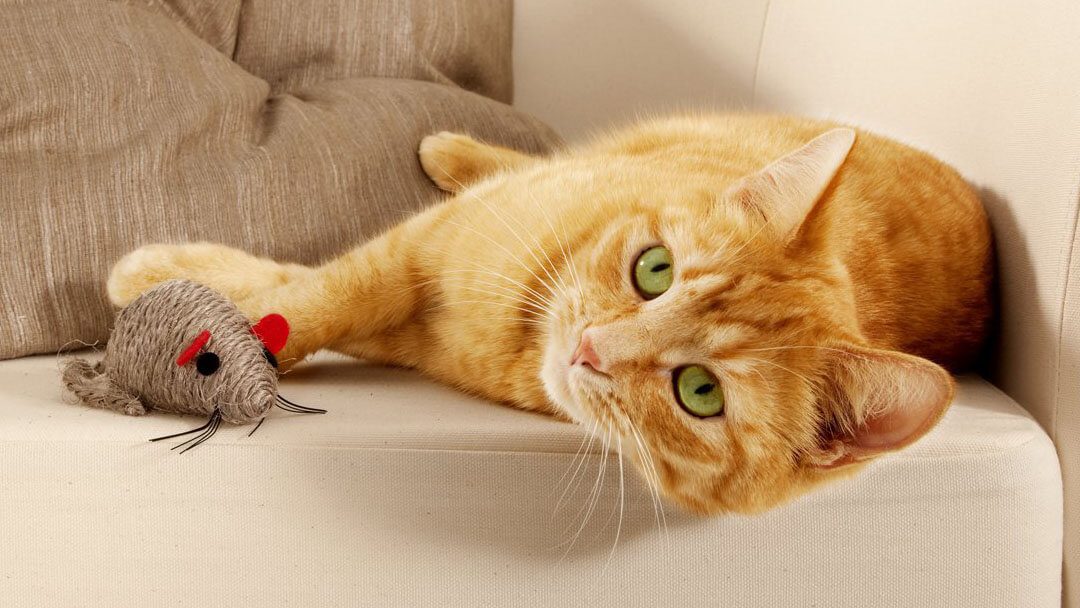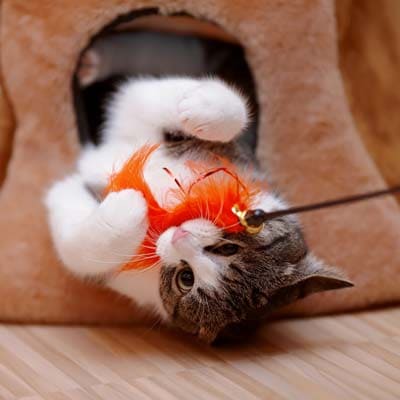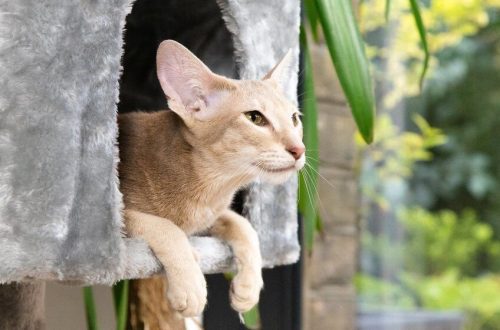
Сигурне игре за мачке и децу
Cats and children get along very well, but their interaction can turn into a disaster if the kids are not taught how to play with animals correctly. Cats have sharp claws and are ready to release them if they feel threatened or stressed, and children, especially small ones, enjoy loud noises and vigorous movements that animals find threatening or stressful.
Don’t think this means your little ones aren’t right for each other – with the right encouragement and under the right circumstances, a cat can be your child’s best friend.
Садржај
Responsiveness and trust
The interaction and play of cats with children is an opportunity for both of them to learn something new. Under any circumstances, the lessons will be obvious to both the pet and the child. Domestic cats can teach children about sensitivity, empathy, and even self-respect as they take care of each other. At the same time, cats learn to trust children and develop a sense of love through positive behavior. On the other hand, improper play can teach a pet to be afraid and dislike children. If he responds with aggression, your children may develop fear and distrust of cats (or animals in general).
To prevent this from happening, it is important to help children understand that a cat is not a toy. As lovely as she is, she is a living being who has as many feelings as his human friends. And although cats may be scared of children if they behave too rudely, playing neatly by her rules will give her a better chance of enjoying their company. Children must show the cat that they will not harm her and that she can trust them.
Why do cats attack
It is important to understand the reasons why cats sometimes attack in order to avoid this unpleasant situation in the future. Despite the fact that some animals are irritable, temperamental or just mischievous, they usually do not bite and do not release their claws just like that. Typically, a cat lashes out because it feels threatened, stressed, or annoyed. However, sometimes even the friendliest cat can get nervous during playful tickling or toy hunting and respond with inappropriate aggression.
Rest assured, the cat will warn you that it is about to attack. In most cases, collisions can be avoided by teaching children to recognize these signs. According to the Humane Society of the United States, tail wagging, ears flattened, curved back, growling, and hissing are all ways for an animal to say “leave it or blame yourself.”
Teaching children how to properly behave and play with cats plays an important role in preventing such unpleasant situations. Of course, it is important to use common sense first when determining whether animals should be allowed to interact with children at all. If your cat is often in a bad mood or has a habit of scratching and biting, or if your children are too young to exercise restraint around sensitive animals, then it is likely not a good idea to let them play.
But there are ways in which you can create conditions for safe and fun play between pets and children.
Provide a safe, relaxed environment
 Make sure your cat has a safe place to hide if she doesn’t like what’s happening, and the cat tree is high enough to be out of the reach of children’s hands. Cats also like high places because from there they have a great view of their surroundings.
Make sure your cat has a safe place to hide if she doesn’t like what’s happening, and the cat tree is high enough to be out of the reach of children’s hands. Cats also like high places because from there they have a great view of their surroundings.
Поставите основна правила
Explain to your children how to play with cats, that during the game they need to be quiet and calm: do not scream, do not squeal, do not run or jump. Depending on age and level of maturity, children also need to be told that it is not good to poke or pull her hair, whiskers, ears or tail. If she runs away and hides, children should never follow her or try to get into her hiding place. It may seem to the little ones that the cat is playing hide and seek, but in fact this is a signal that she has had enough and that her feelings must be respected.
Make dating slow
Let the child, lying on the floor, slowly extend his hand for the cat to sniff it. The cat is more likely to befriend him if he is allowed to come along on his own. If she rubs her face against your hand or presses her head against it, take it as a sign that she is ready to play.
Supervise the child’s handling of the animal
Toddlers and preschoolers will need to be shown how to pet a cat without pulling on its fur. You can stroke their hands first to show how proper strokes feel, and then guide them as they stroke their pet’s back. Keep them away from her face or lower torso as these are the most sensitive areas. Many cats can get nervous when they are tugged and rumpled. In the case of some animals, tummy stroking is a surefire way to get a helping hand of sharp claws. Even if the cat rolls over and exposes him, you need to find out if she is stretching or waiting for affection before allowing the child to touch her.
Older children can pick up a cat, but they need to be shown how to do it correctly: one hand firmly supports the torso, and the other supports the back for stability. With the cat in their arms, children must either sit or stand still, keeping it upright so that it can control the situation. It is very tempting to take a pet like a baby being rocked, but very few animals enjoy being in this position.
Cats, like children, love interactive games, but they lose interest in them much faster and can easily show aggression. Limit play time to about ten minutes, or until she gets bored and stops, whichever comes first.
Lure her with toys
Toys don’t have to be fancy. Ping-pong balls, crumpled paper, and empty toilet paper tubes are great for getting your cat’s attention and keeping them entertained. Have your child carefully toss these makeshift toys to see if she runs after them, or place the toy in an empty tub where she can chase after it without interference. If she has a favorite toy, she might smell it – engage her in a game of hide and seek by letting the child hide the toy and encouraging the cat to go looking for it.
Joint play can be interesting and useful for both cats and children. The keys to safe play are education, observation, and respect for the cat’s feelings. Under such circumstances, your pet may understand that she lacks communication with your child – and vice versa.





